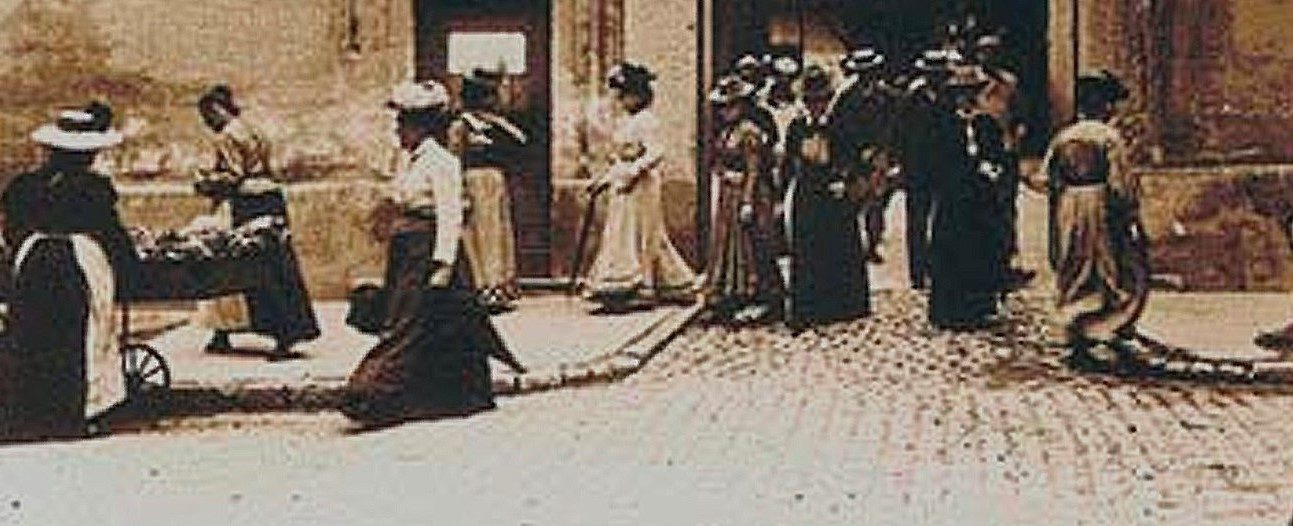France, 1980
Directed by Paul Grimault
(Animated movie)

Once upon a time in the city of Takicardie there was a king liking to hunt birds but unable to shoot down a big and talkative one which is always poking fun at him –being cross-eyed and a bully do not help. The film quickly makes plain that the king’s rule is tyrannical, with a paramount cult of personality reflected in sculptures and paintings of his haughty person towering over the huge, flourished, but empty spaces of the strange city, perched on a hill and whose buildings and castles have been piled up along a long vertical hillside, the long tall line over which the royal abode’s lift moves up and down when the film starts. The rude bird has built its nest at the highest point, on top of the small and secretive palace of the king.
This is the place where images delightfully take charge of the narrative. As the king is sleeping a sculpture the subjects of the various paintings of his bedroom come to life. In particular a chimney sweep tells a shepherdess he loves her and she owns up that the feeling is requited. But the sculpture of an old knight warns them this is a wrong thing: nice-looking shepherdesses must marry great kings. Indeed, the new portrait of the king starts to move and ask the girl to change her mind. She will not and both commoners flee as the king tries to catch them. The commotion wakes up the real king who is, in an amazing move, readily eliminated by his image: from now on the kingdom is ruled by a fake, who mobilizes the state apparatus to bring back the shepherdess.
The bird tries to help the young lovers. Their rush to freedom drives them to go down to the underground part of the city and to discover the dark side of the kingdom, a maze of poor lodgings and big factories where most of the inhabitants live in fear and unaware of the real world’s wonders, including the sun and the birds. The trio is eventually caught by guards and the shepherdess is forced to marry the king while the bird and the chimney sweep are sentenced to work in a factory and then are thrown to a pit full of starving big cats. But the bird has the gift of the gab that would provoke an unexpected revolt and the awaited happy ending can happen.
Eventful and colorful, the film is based on a tale by Hans Christian Andersen and written in part by poet Jacques Prévert. The arc of a challenged love affair is doubled by a critique of the powerful. The pictures make the point thanks to the obsessive motif of verticality, with the physical structure of the kingdom mirroring the unjust social hierarchy or with telling details like the fact that falling through a trap door on the floor is the inescapable punishment destined to whoever displeases the king.
Breaking free of the straight line signals life and joy in “Le roi et l’oiseau”. The circular motions of the bird, as it flies or when it brings its long wings to its chest to protect or to underline what it says, boldly run contrary to the straight line defining the kingdom while the lovers start to exist precisely because they get out of the frame around their image and then move around the place. The contrast between the upper city, bright but deserted, and the lower city, full of people but in darkness, is stark and heartbreaking. The narrative, which began with the ironic and hilarious depiction of the king and the jolly talk of the bird, increasingly mixes humor with a sadder tone and in this move from impish to nightmarish tones the tale becomes a damning description of inequality.
As images shape the narrative, the sentiments animating them determine the outcome. The love between the chimney sweep and the shepherdess enables them to become real characters and to succeed. The conceited and ugly nature of the king gets the upper hand only for a fleeting moment before he is blown away (literally). The idea is simple but told in an elegant and clever way and it suits well the overall message on the unfairness of any power, concluding the string of episodes that exposed with zest and fancy this other instance of the perennial fight between good and evil. The quality of the drawings and the overall inventiveness are magnificent, striking pictures coming smoothly one after another and holding in awe the audience. One of the best examples of this brilliancy occurs near the film’s ending, when the gigantic robot the king used to catch his victims but has been hijacked by the bird to destroy the kingdom is shot sitting up on rubble, in the same pose as the thinker sculpted by Auguste Rodin. The machine seems to be tired and to look like the people still inside or scattered around who may surely be wondering what comes next. What is clear, however, is that at least a big prison has been knocked down.

